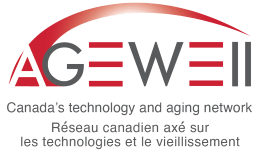
Uncovering the black box between research and policy: Reflections on the APPTA Policy Challenge
Author(s) & Credentials: Andrew Magnaye, PhD Student, AGE-WELL HQP
Affiliated Institution(s): University of Alberta
Acknowledgements: Research on Aging, Policies and Practice (RAPP) Team
What inspired you to begin researching this area? Describe the main issue or challenge you intend to address with this project.
My biggest inspiration to pursue a career in caregiving research, policy and practice was and forever will be my grandmother. The life lessons she taught me growing up have contributed to my desire to give a voice to the often voiceless, and share the stories of families who care for their aging loved ones throughout the life course.
The issue I was presented with during the APPTA Policy Challenge was to determine what the current leading supports for family carers were across domains, and what potential policy recommendations could be made to help better integrate assistive technologies into the care picture.
As a researcher, we often tackle very big picture problems, and do our best to provide evidence-based recommendations in how to practically solve them, or at least move towards solving them. As I have learned throughout my graduate training, policy is a researcher’s most effective tool in bringing about real change in the everyday lives of our populations of interest. However, I have found that there seems to be a black box that separates the insight gained from research, and how that work translates into policy.
Briefly summarize your research project.
In Visions for Change Policy Challenge Report: What are the leading practices in providing supports for working caregivers? I intended to bring the needs and goals of working caregivers to the forefront, and explore the leading practices in providing them with the supports necessary to fulfill their caregiving demands. By engaging stakeholders from across Canada, participating in international forums and analyzing policy documents and supporting literature it was found that although many supports are in place for working caregivers in Canada, they are often difficult to access, complex to navigate and secure, and vary widely across provincial and territorial jurisdictions.
It was discovered while creating my report that there is great potential for technology to play a role in helping to support working caregivers. Flexible work arrangements, including those that promote the adoption of assistive technologies, make it possible for working caregivers to balance their paid employment with their growing demands from their care receiver(s).
Discuss some of the past, present, and/ or intended future real-world applications of this research.
We all do our best to balance our many competing responsibilities. For a growing number of Canadians that includes providing care for a spouse, parent, family member, friend or neighbour in need. Caregivers’ contributions to families, communities, and broader Canadian society are often underestimated and overlooked. For a large proportion of those caregivers, who also maintain paid employment, they are consistently juggling paid work and family care responsibilities.
My hopes in conducting this current research was twofold: 1) to provide family carers with a detailed picture into the supports and policy that are currently available in order to help them better balance their paid work and family care responsibilities; 2) to provide government and policy stakeholders a launchpad in which to better craft policies that support working caregivers.
If applicable, identify any important policy implications this research may have.
The policy recommendation section of my report builds on the business case to why supporting working caregivers benefits not only employers, but governments and more broadly the Canadian economy.
In my report, I highlight 3 actionable items that government decision-makers can adopt to help organizations across Canada move towards assistive technology and caregiver-friendly standards and practices. These policy action items included: government subsidized Employment Assistance Programs (EAPs) to help employers give working caregivers access to assistive technologies; government-led education and awareness campaigns directed at employers on the benefits of assistive technologies for supporting working caregivers in the workplace; and government incentives for organizations who adopt the Carer-inclusive and Accommodating Organizations (CIAO) Standard with the inclusion of assistive technologies as solutions to facilitate carer-friendly workplaces.
The hopes of my report was to provide those looking to improve the lives of working caregivers, a firm starting point in which to give back to those who continue to give so much.
Tags: APPTA policy challenge, caregiver, caregivers awareness, caregiving, caregiving awareness, unpaid caregiver, unpaid caregivers, Visions for change, working caregivers

